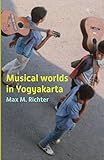Musical Worlds of Yogyakarta / Max M. Richter.
Material type: TextPublisher: Singapore : ISEAS Publishing, [2012]Copyright date: ©2012Description: 1 online resource (222 p.)Content type:
TextPublisher: Singapore : ISEAS Publishing, [2012]Copyright date: ©2012Description: 1 online resource (222 p.)Content type: - 9789814414456
- 9789814414463
- 780.9582
- ML3917.I5 R53 2013
- online - DeGruyter
| Item type | Current library | Call number | URL | Status | Notes | Barcode | |
|---|---|---|---|---|---|---|---|
 eBook
eBook
|
Biblioteca "Angelicum" Pont. Univ. S.Tommaso d'Aquino Nuvola online | online - DeGruyter (Browse shelf(Opens below)) | Online access | Not for loan (Accesso limitato) | Accesso per gli utenti autorizzati / Access for authorized users | (dgr)9789814414463 |
Browsing Biblioteca "Angelicum" Pont. Univ. S.Tommaso d'Aquino shelves, Shelving location: Nuvola online Close shelf browser (Hides shelf browser)

|

|

|

|

|

|

|
||
| online - DeGruyter Economic and Political Trends in Southeast Asia / | online - DeGruyter The Future Pattern of Japanese Economic and Political Relations with Southeast Asia / | online - DeGruyter Different Under God : A Survey of Church-going Protestants in Singapore / | online - DeGruyter Musical Worlds of Yogyakarta / | online - DeGruyter Asia Redux : Conceptualizing a Region for Our Times / | online - DeGruyter Architects of Growth? : Sub-national Governments and Industrialization in Asia / | online - DeGruyter Contemporary Developments in Indonesian Islam : Explaining the "Conservative Turn" / |
Frontmatter -- Contents -- Acknowledgements -- Glossary of special terms -- Introduction: Approaching musical life in early post-Soeharto Yogyakarta -- PART 1. Music and the street -- Background -- 1. Sosrowijayan and its street workers -- 2. Musical forms and spaces -- 3. Music groups -- Conclusion -- PART 2. Habitus and physicality -- Background -- 4. Detachment engagement -- 5. Other worlds and sexualisation -- Conclusion -- PART 3. State power and musical cosmopolitanism -- Background -- 6. Regional Parliament -- 7. Armed Forces -- 8. Universities -- Conclusion -- Conclusion: Campursari and jalanan at the Sultan’s Palace -- Bibliography -- Index
restricted access online access with authorization star
http://purl.org/coar/access_right/c_16ec
Musical Worlds in Yogyakarta is an ethnographic account of a vibrant Indonesian city during the turbulent early post-Soeharto years. The book examines musical performance in public contexts ranging from the street and neighbourhood through to commercial venues and state environments such as Yogyakarta’s regional parliament, its military institutions, universities and the Sultan’s palace. It focuses on the musical tastes and practices of street workers, artists, students and others. From street-corner jam sessions to large-scale concerts, a range of genres emerge that cohere around notions of campursari (“mixed essences”) and jalanan (“of the street”). Musical Worlds addresses themes of social identity and power, counterpoising Pierre Bourdieu’s theories on class, gender and nation with the author’s alternative perspectives of inter-group social capital, physicality and grounded cosmopolitanism. The author argues that Yogyakarta is exemplary of how everyday people make use of music to negotiate issues of power and at the same time promote peace and intergroup appreciation in culturally diverse inner-city settings.
Mode of access: Internet via World Wide Web.
In English.
Description based on online resource; title from PDF title page (publisher's Web site, viewed 01. Dez 2022)


